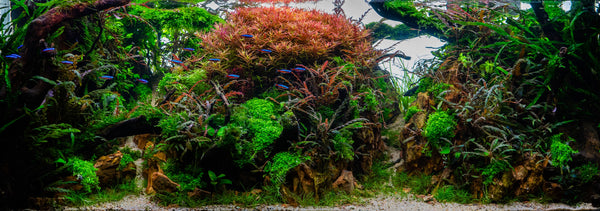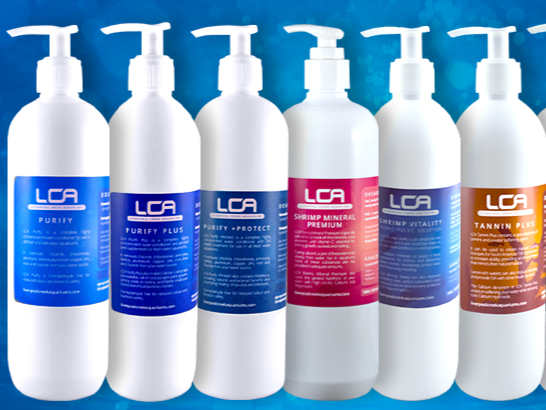Your Cart is Empty
WELCOME TO LCA
please note: current orders and those placed this week will be sent week starting Monday 28th April due to easter monday and anzac day holidays
******************************
WE SHIP ORDERS ON MONDAY AND TUESDAY
cut off for same week orders is 12pm sunday qld time
*we do not ship plants or livestock to tas or w.a without quarrantine approval*
WELCOME TO LCA
please note: current orders and those placed this week will be sent week starting Monday 28th April due to easter monday and anzac day holidays
******************************
WE SHIP ORDERS ON MONDAY AND TUESDAY
cut off for same week orders is 12pm sunday qld time
*we do not ship plants or livestock to tas or w.a without quarrantine approval*
Store

Water Change The Right Way
4 min read
Water Change The Right Way
Maintaining a regular water change schedule is an important part of aquarium keeping.
Water changes help to remove organic waste (especially with targeted siphoning of detritus), inhibiting formation of algae. They also help to keep quantities of total dissolved solids, minerals and nutrients at safe levels for livestock and plants.
Planted tanks using regular Estimative Index or similar fertilisation schedules should have their water changed weekly. Similarly, if you have a large amount of fish, high amounts of dissolved solids in your water source (especially copper) or livestock sensitive to water quality, weekly water changes are highly recommended.
For aquariums with a light bio-load or undergoing less frequent fertilisation, water changes can be performed every 2 weeks instead. Keep in mind you can never keep your water quality too high!
Water Change Amounts
100%
100% water changes can be safely made if the water parameters from your tap are very close to the parameters in your aquarium. This means the hardness and temperature of the water being added should be almost exactly the same, and the water should contain no ammonia, no heavy metals and should not be oversaturated with carbon dioxide which can alter PH.
The GH, KH, PH and temperature of the water to be added can be fairly easily adjusted as necessary with additives and measurement if required.
Contrary to popular belief, your beneficial bacteria will not be drastically harmed by performing large water changes (providing water parameters remain balanced). The bacteria lives mostly in your filter and substrate, not in the water column.
Some livestock that are more sensitive may become stressed by frequent large water changes, such as shrimp and more delicate fish species. However, as long as your parameters remain relatively stable during these changes, most stress will generally be caused by the physical act of draining and replacing water. Make this process as gentle as possible and you should have minimal issues.
The benefit of removing large amounts of organic waste and keeping your water quality pristine outweighs any small negatives caused by large water changes. It can be hugely beneficial in livestock breeding tanks where waste levels are generally high. Using a quality dechlorinator at each water change is absolutely compulsory to ensure your bacteria, livestock and plants aren’t harmed.
50%
A regular weekly water change of 50% is recommended for tanks using Estimative Index (EI) fertilisation. EI fertilisation relies on providing an excess of nutrients so that plants never go hungry. This means at the end of each week, unused nutrients are removed during the water change to reset levels back to baseline. Without regular water changes, levels of lesser-used nutrients can reach levels that are dangerous to livestock, with the potential to also cause algae blooms.
Tanks with high bio-loads also benefit from regular 50% water changes to keep levels of organics, nitrates and phosphates at levels safe for livestock.
In general, while 50% is considered a large water change, it is safe for the majority of aquariums providing water parameters are not vastly different between your tap and the tank.
30%
A 30% water change is optimal for most aquariums except for those with heavy bio-load or intense fertilisation routines. It’s a perfect weekly amount for tanks that are regularly fertilised with less concentrated products.
Where tap water has parameters that vary significantly to your tank water, a 30% change is generally safe to perform as it won’t fluctuate your hardness or levels of minerals too much. If your tap water contains heavy metals then a smaller water change is safer as well.
Some aquariums might have artificially raised KH / PH via additives or stones such as Seiryu, and if your tap water already has a high KH, performing larger water changes can spike KH levels which could harm your livestock or plants. It’s important to know what’s in your tap water!
In tanks containing sensitive livestock, smaller changes like this can also be beneficial.
10-20%
A very small water change amount, but sometimes necessary, 10-20% changes are recommended if your tap water quality is low – this means your water contains significant amounts of heavy metals, ammonia, nitrates or other less desirable minerals that will affect your parameters.
Any amount of ammonia in your aquarium is potentially dangerous. In combination with a high PH level (above 7), ammonia toxicity increases, which is dangerous not only for your livestock but also your plants. At lower PH plants will be able to use ammonia as a nutrient, but less ammonia is required to produce toxic effects.
Multiple 10-20% water changes can be performed over the course of a week as an alternative to one large weekly water change. This can be helpful in maintaining good water quality without the dangers of drastically altering parameters. Siphoning of detritus should be performed at each small water change to get the best results and keep organic levels low.
Points to remember
If your tap water closely matches your tank water, regular large water changes of 50% or more combined with siphoning of waste and decaying matter is an excellent way to keep water quality at its best and algae at bay.
Drastic changes in water parameters are usually harmful to plants and livestock, so if you’re unsure of your tap water quality or notice any problems during water changes, stick to changing smaller amounts of water – 20-30% should be fine.
If you know your tap water quality is substandard, keep your water changes to around 10-20% to ensure the safety of your livestock and plants.
From The LCA Team
Every Solution For Your Aquarium.
Subscribe
Sign up to get the latest on sales, new releases and more …

Join Us
Join our Facebook group and benefit from the knowledge of
Australia’s largest community of planted aquarium enthusiasts!







